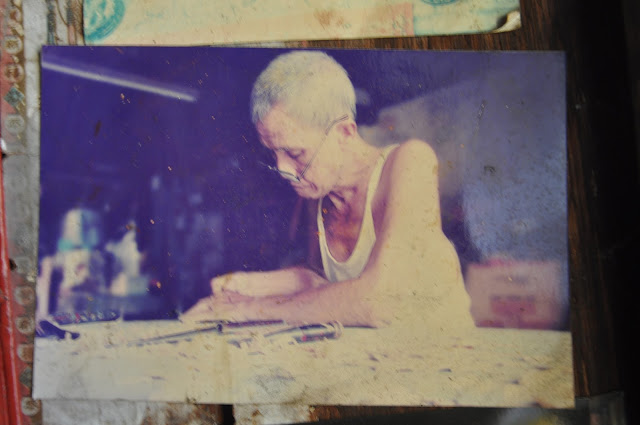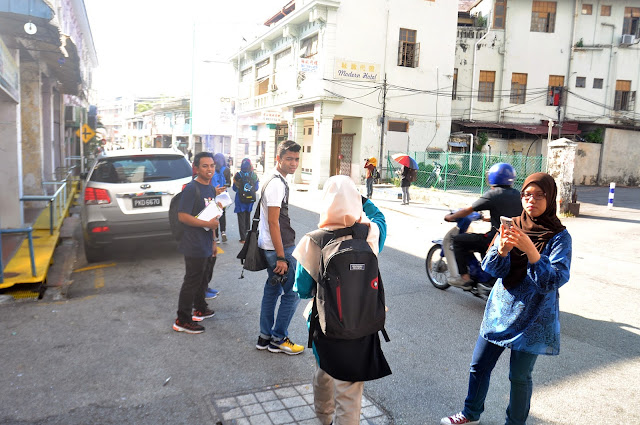The signboard shop is currently owned by a veteran named Kok Ah Hwa who is one of the last remaining traditional signboard maker in Penang. The art of making this signboard is passed down from his father who originated from Guandong China. This craftsmanship is fading due to the rise of modern signages. However, Kok Ah Hwa is striving to continue this tradition. Thus, he is referred as 'Living Heritage Treasure' due to his effort in preserving this precious.
The making of signboard by using traditional method is pretty straight forward. But, you still need enough talent and experience before you can get high quality work. The steps of making this signboard are based on bellow instruction;
A piece of sandpapered softboard, cut to size and shape, is treated with a layer of glazing putty to smooth out the surface. When the glazing has dried, the characters to be carved are traced onto the board with carbon paper. This will provide an outline with which to work on.
After the characters have been carved, another layer of putty, and thinner, is applied. Finally, the board is painted in two colours, one for the background (usually black, but red and green are also used) and gold for the characters. Completion takes about three weeks.
source : http://www.penang-vacations.com/traditional-signboard-maker.html
- 03:56:00
- 0 Comments


































































